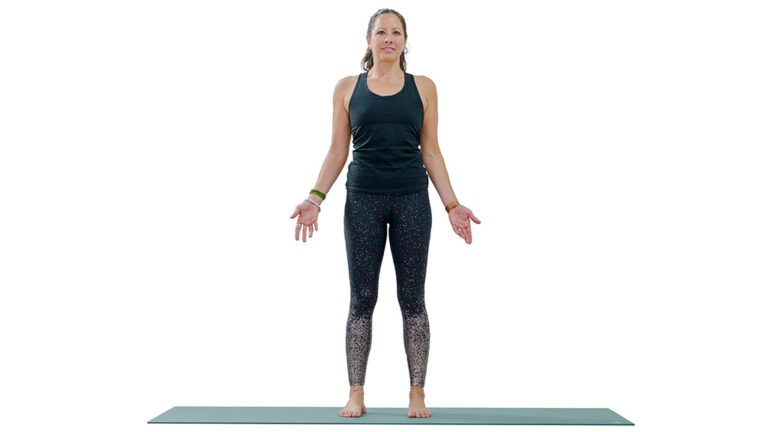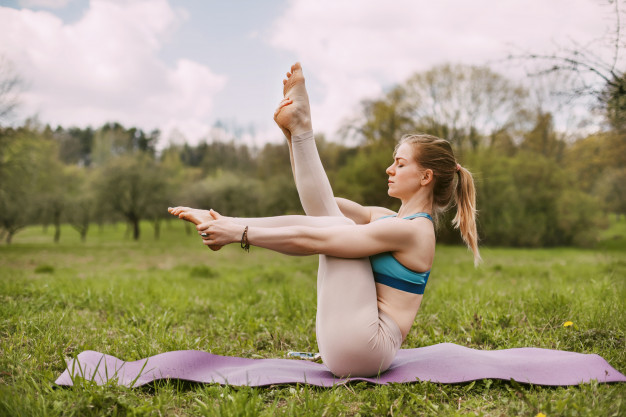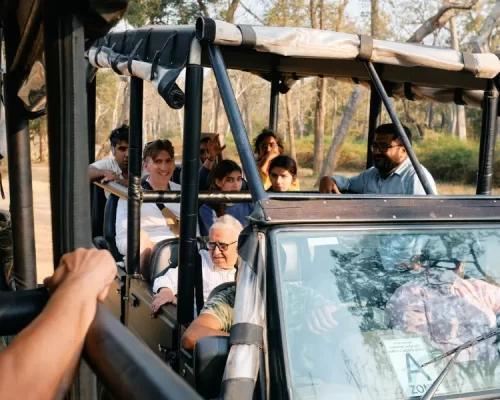Yoga is proclaimed as a way of life and rightly so. That said living should be the most natural and easy thing to do, so should be Yoga. Most people begin the wrong way and never return to the path of Yoga. That said, it is not that Yoga is completely simple and easy. Same as all human endeavors, as you scale higher, the practice gets tougher, complicated, and intense. But this article is targeted at those beginning their journey on the path of Yoga.
Let’s start at the very beginning. All Indian schools of thought stress the importance of a teacher. Although we celebrate outliers such as Ekalavya who studied archery virtually, the norm is to study under a Guru. Yoga is no different. With the proliferation of uncountable Yoga apps on your devices, it is easy to start your journey, and for most, it ends as soon as it begins. We hope and pray the end is due to a lack of interest rather than brought on by an injury. So, in conclusion, it is essential to have a Guru lead you on the way, at least initially. If you do not have access to good Yoga teachers nearby, a Yoga retreat by experts such as at Red Earth Gokarna, a wellbeing retreat set amidst a secluded beach close to Goa is an ideal way to start.
All the paraphernalia and non-essentials for beginners, such as expensive yoga mats and yoga clothes is something you should desist from investing in. You will appreciate these accessories more when you are more advanced. So to begin with a good, comfortable, and grippy mat with even cotton clothes to absorb your perspiration would be ideal.
Now that you are ready, let’s explore what asanas you have to master before you graduate from a beginner. These asanas are designed to deliver the maximum benefit with minimum risk and effort. Easy Yoga asanas to improve strength, flexibility, and balance, the three pillars of Hatha Yoga are the ones a beginner should target.
The practice of Yoga could be ‘addictive’ to many with hours rolling by without noticing the flow of time. For the others who find it effortful, what are the ideal period and time of practice, you ask? The beauty of Yoga is not just that it will make you flexible in a way that you never dreamt of, but also Yoga itself is flexible, allowing an indulgence for all levels of practitioners. Even a 10-minute session can bring tangible benefits if done consistently for months. That said, 30 minutes to an hour session delivers the optimum result in a quick time period. Also, such long periods of practice can target all aspects of Yoga – strength, flexibility, and balance.
Before we begin listing out the easy to do yoga asanas for beginners, let’s focus on a few important points.
If you are recovering from an injury or have a history of chronic disease, consult your physician before beginning. Let your yoga teacher know of any injuries or pains. Suffering through pain is not Yoga, no matter what legends you have heard about Yogis on a bed of nails.
Yoga means coming together. Naturally, there is no competition. You must do what you easily can. You are expected to progress at your own pace. Listen to your body and do not push yourself. Perfect Yoga is to find a balance between effort and relaxation.
Consistency is key. A cliche, made into one by the fact that we humans keep forgetting it. Be regular in your practice and don’t give up because you can’t touch your toes in the first go.
Unbelievable benefits of the Yoga practice will unfold as you go along.
A lifetime of not optimizing your body has made it a little weak and inflexible. Don’t get discouraged by that, it improves over time. Be patient and give your body the time to respond.
If we were to describe Yoga in a phrase, it would be “breathe control”. Focus on the breath, right from the beginning. Asanas become natural and flow if you inhale and exhale as instructed.
Here are a few basic Yoga asanas that can help you get started. As mentioned in the beginning, we will not tell you how to do the asana, as a Guru is necessary to correct your pose and help you master the asana. This list is meant to help you stick to easy asanas to keep you motivated as you grow in Yoga.
- Tadasana (Mountain Pose)

You might think you know how to stand straight. Wait till you practice Tadasana. This pose teaches one to stand with majestic steadiness like a mountain. ‘Tada’ means a mountain, that’s where the name comes from. Involving the major groups of muscles improves focus and concentration. It is the starting position for all the other asanas.
- Vrikshasana (Tree Pose)

The beginning pose gives you a sense of grounding, improving balance and strength at once. The major muscle groups involved are the legs and back. It is inspired by the steadiness of a tree.
- Adho Mukha Svanasana (Downward-Facing Dog Pose)

The quintessential asana is the starting point for various Vinyasas (sequence of asanas). This pose is targeted at the hamstrings, chest, lengthening the spine, providing additional blood flow to the head. Energising and empowering, this asana leaves you with a feel-good factor.
- Trikonasana (Triangle Pose)

A bilateral pose, done once on each side, Trikonasana stretches the legs and torso, mobilizes the hips, and promotes deep breathing. Mastering this pose is a starting ground for various balancing vinyasas.
- Kursiasana (Chair Pose)
When done as a part of the vinyasa, this is an intensely powerful pose. Strengthens the muscles of the legs and arms, It also builds your willpower and has an energizing effect on the body and mind as it challenges you with every breath you take.
- Naukasana (Boat Pose)

Inspired by everyday things around us, Yoga teaches you to be mindful of your own body and its movements. Naukasana is a perfect example of this. Targeted at tightening the abdominal muscles and strengthens shoulders and upper back, it provides the practitioner with a sense of stability.
- Bhujangasana (Cobra Pose)

Inspired by a majestic creation of nature, Bhujangasna will strengthen the lower back muscles while cushioning the spine, triceps and opening the chest to promote the inhalations. It also makes the spine flexible. Again, as always, breathing is key here to get the asana perfect.
- Paschimottanasana

An important supine asana, Paschimottanasana helps in improving the flexibility of the hamstrings and hips and lengthens the spine. A good counterbalancing stretch for some of the other spinal stretch asanas.
- Child’s Pose

A pose that is restful allowing you to let go and surrender at any point during practice. Let this be your go-to asana if you are tired and need a break in between a Yoga session. It restores vitality physically, mentally and emotionally. Insert the pose between challenging asanas, and practice with closed eyes, listening to the sound of your breath.
- Sukhasana

As effort is important so is relaxation. Sukhasana is designed to be a comfortable position for pranayama and meditation providing the practitioner with a centering effect. In some sense, this is the epitome of Yoga, since all other asanas, no matter how simple or complicated, are designed to achieve the perfect balance and relaxation in Sukhasana. This is the asana of meditation taking the yoga practice beyond the physical dimension and getting you in touch with your spiritual side.
Mastery over these beginners Yoga Asana is essential to graduate to the next level. Do not take an effortful shortcut. Be honest with yourself about the ease of doing these asanas. Remember, breathing is the most important in all this. Yoga is as easy as just breathing.



